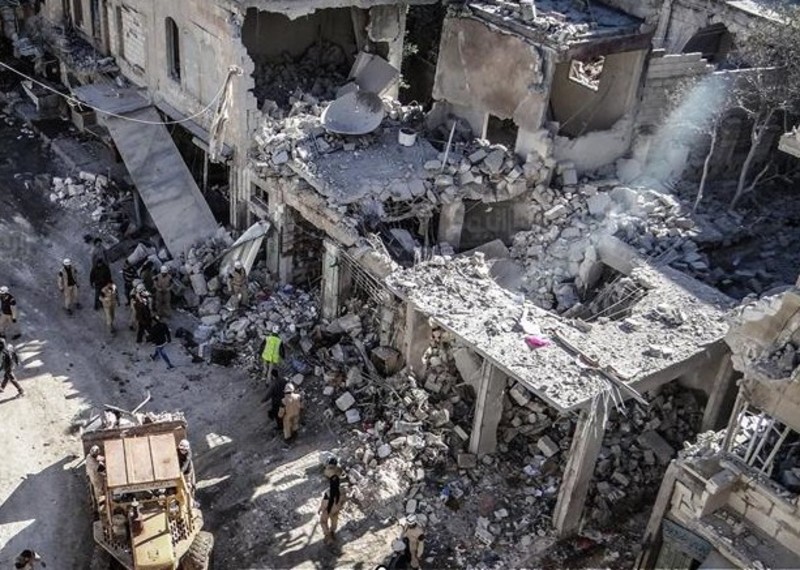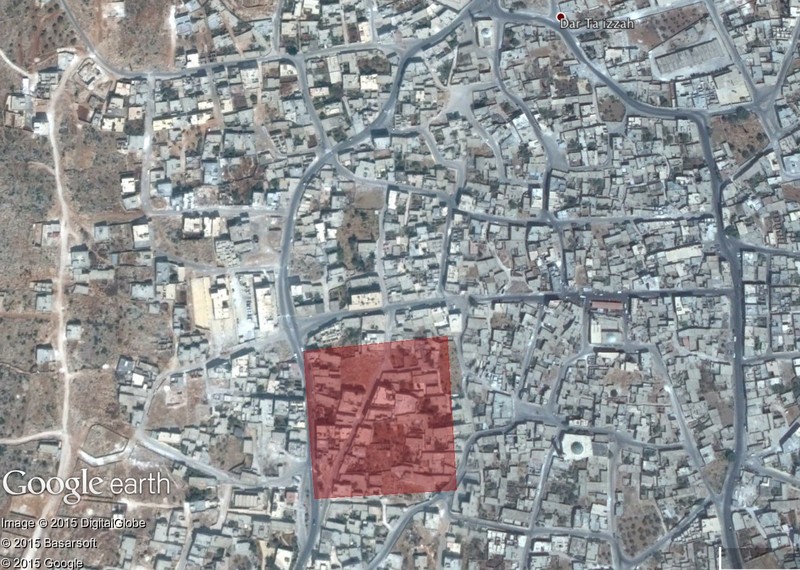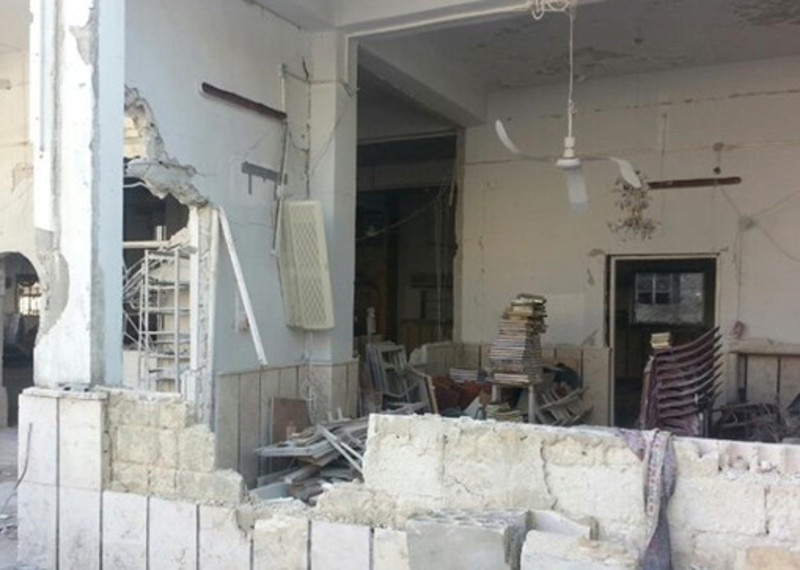Russian air strikes in Syria have killed hundreds of civilians and caused massive destruction in residential areas, striking homes, a mosque and a busy market, as well as medical facilities, in a pattern of attacks that show evidence of violations of international humanitarian law, said Amnesty International in a new briefing published today.
‘Civilian objects were not damaged’: Russia’s statements on its attacks in Syria unmasked highlights the high price civilians have paid for suspected Russian attacks across the country. The report focuses on six attacks in Homs, Idleb and Aleppo between September and November 2015 which killed at least 200 civilians and around a dozen fighters. The briefing includes evidence suggesting that Russian authorities may have lied to cover up civilian damage to a mosque from one air strike and a field hospital in another. It also documents evidence suggesting Russia’s use of internationally banned cluster munitions and of unguided bombs in populated residential areas.
“Some Russian air strikes appear to have directly attacked civilians or civilian objects by striking residential areas with no evident military target and even medical facilities, resulting in deaths and injuries to civilians. Such attacks may amount to war crimes,” said Philip Luther, Director of the Middle East and North Africa Programme at Amnesty International.
“It is crucial that suspected violations are independently and impartially investigated.”
Some Russian air strikes appear to have directly attacked civilians or civilian objects by striking residential areas with no evident military target and even medical facilities, resulting in deaths and injuries to civilians.
Philip Luther, Middle East and North Africa Director at Amnesty International
The Russian authorities have claimed that their armed forces are only striking “terrorist” targets. After some attacks, they have responded to reports of civilian deaths, by denying they killed civilians; after others, they have simply stayed silent.
Amnesty International interviewed eyewitnesses and survivors of attacks as well as examining video evidence and images showing the aftermath of attacks, aided by analysis by weapons experts. The attacks were identified as suspected Russian air strikes by cross-referencing details of each attack with statements from the Russian Ministry of Defence announcing “terrorist” targets struck, or from details about the nature of the attack in witness testimony.
The organization’s research into these strikes indicate that there were no military targets or fighters in the immediate vicinity of the areas that were struck. This suggests that the attacks may have violated international humanitarian law and may, in some circumstances, constitute war crimes.
In one of the deadliest attacks documented in the briefing three missiles were fired on a busy market in the centre of Ariha in Idleb governorate killing 49 civilians. Witnesses described how within seconds the bustling Sunday market turned to a scene of carnage.

“In just a few moments, people were screaming, the smell of burning was in the air and there was just chaos. There was a primary school nearby, and children were running out absolutely terrified… there were bodies everywhere, decapitated and mutilated,” said Mohammed Qurabi al-Ghazal, a local media activist.
In just a few moments, people were screaming, the smell of burning was in the air and there was just chaos.
Witness to suspected Russian air strike
He saw one woman sitting and crying beside 40 bodies lined up in a row. She had lost her husband and three children. ”Her children were literally in bags. To this day, I cannot get over it,” he added.
In another suspected Russian attack, at least 46 civilians, including 32 children and 11 women who were sheltering for safety in the basement of a residential building, were killed on 15 October in al-Ghantu, Homs governorate. Video footage of the scene after the attack shows no evidence of a military presence. Weapons experts who analysed images of the attack said the nature of the destruction indicated possible use of fuel-air explosives (also known as “vacuum bombs”), a type of weapon particularly prone to indiscriminate effects when used in the vicinity of civilians.In another attack five civilians were killed and a dozen homes were destroyed when a suspected Russian sea-launched cruise missile struck residential buildings in Darat Izza, Aleppo governorate, on 7 October.

“It felt very different from other air strikes… the ground shook like an earthquake… this was the worst destruction I had seen… A mother and her two children were killed in one house and a young couple in another house. The couple were married about a week before the attack,” said one local witness, who confirmed the area struck was residential and that there were no nearby military bases of any armed groups.
Suspected Russian air strikes have also struck hospitals. Medical facilities have special protection under international humanitarian law, and attacking them can amount to a war crime. A witness to an attack just a few metres from Sermin field hospital in Idleb said the attack appeared to have been carried out by a more sophisticated plane as they did not see or hear the plane before the missiles were dropped.
The Russian authorities’ reaction to an attack on Omar Bin al-Khattab mosque in central Jisr al-Shughour, Idleb governorate, on 1 October raises serious questions about the tactics they are prepared to deploy to undermine criticism of their operations. After reports and photos of the destroyed mosque emerged, the Russian authorities responded by calling it a “hoax”, presenting a satellite image purporting to show the mosque still intact. However, the mosque shown in the image was a different one from the one destroyed in the attack.

“By presenting satellite imagery of an intact mosque and claiming it showed another that had been destroyed, the Russian authorities appear to have used sleight of hand to try to avoid reproach and avert scrutiny of their actions in Syria. Such conduct does not cultivate confidence in their willingness to investigate reported violations in good faith. Russia’s Ministry of Defence must be more transparent and disclose targets of their attacks in order to facilitate assessment of whether they are complying with their obligations under international humanitarian law,” said Philip Luther.
Since a Russian fighter jet was shot down by the Turkish air force on 24 November, Russia’s Ministry of Defence has released even less information about its campaign in Syria than it did before then.
By presenting satellite imagery of an intact mosque and claiming it showed another that had been destroyed, the Russian authorities appear to have used sleight of hand to try to avoid reproach and avert scrutiny of their actions in Syria.
Philip Luther
Amnesty International has also gathered evidence, including photos and video footage, suggesting the Russians have used unguided bombs in densely populated civilian areas, as well as internationally banned deadly cluster munitions.
Cluster munitions are inherently indiscriminate weapons that must not be used in any circumstances. Each cluster bomb scatters scores of bomblets over an area the size of a football pitch. Because of their high dud rate they pose a continuing threat to civilians for years after their initial use. The repeated use of unguided bombs in the vicinity of densely populated civilian areas would violate the prohibition of indiscriminate attacks.
“Russia must end indiscriminate and other unlawful attacks. They must halt all use of cluster munitions and stop dropping unguided bombs on civilian areas,” said Philip Luther.


